WWII Profiles of Officers in Command
These American and Japanese men led the battle for Guam in 1944.
Admiral Chester W. Nimitz, US Navy
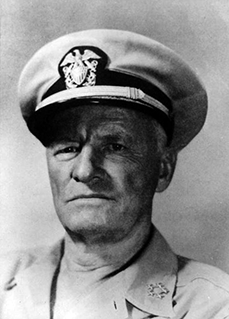
Admiral Nimitz was Commander in Chief, United States Pacific Fleet at the time of the Liberation of Guam. Born in 1885 in Fredericksburg, Texas, he graduated from the Naval Academy in 1905. He served on various ships in the Pacific and was once court-martialed for running the Decatur aground. Prior to his appointment as CinCPac, Nimitz was in charge of the Bureau of Navigation in Washington, DC. On 31 December 1941 he assumed command of the Pacific Fleet. He commanded the Fleet until the end of the war. At the end of the war, his headquarters was at Fonte Plateau, now called Nimitz Hill, in Guam. He later was promoted to Fleet Admiral and served as Chief of Naval Operations. He died in 1966 and is buried in Golden Gate National Cemetery in San Francisco.
Admiral Raymond A. Spruance, US Navy
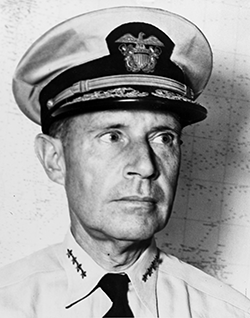
Admiral Spruance was Commander, Fifth Fleet at the time of the Liberation of Guam. Thus, he commanded the US Navy ships offshore of Guam and in the Battle of the Philippine Sea. Born in 1886 in Baltimore, he graduated from the Naval Academy in 1907. He served on several battleships with his first command being the destroyer Bainbridge. At war’s beginning, he was in command of a cruiser squadron. Spruance was then in charge of the US Navy forces at the Battle of Midway. Later he alternated the command of the fleet with Admiral Halsey. After the war, he became Commander of the Pacific Fleet, later ambassador to the Philippine and died in 1969.
Vice Admiral Richmond K. Turner, US Navy
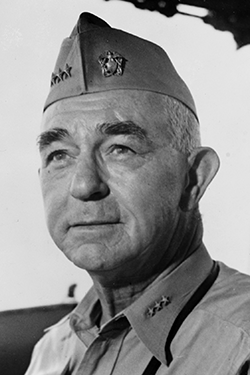
Admiral Turner was Commander Joint Expeditionary Force, and thus responsible for taking the three principal Mariana islands invaded. Born in 1885, he graduated from the Naval Academy in 1908. Turner was a gunnery officer in the First World War, qualified as a naval aviator in 1927, and at the time of the Pearl Harbor attack was director of the War Plans Division of the Navy Department. In 1942, Turner was appointed commander of the Amphibious Force of the Pacific Fleet. His first assault was the invasion of Guadalcanal. He later directed American attacks in the Solomons, Gilberts, Marshalls, Marianas, Iwo Jima, and Okinawa. He was promoted to admiral in 1945, retired in 1947, and died in 1961.
Lt.General Holland M. Smith, US Marine Corps
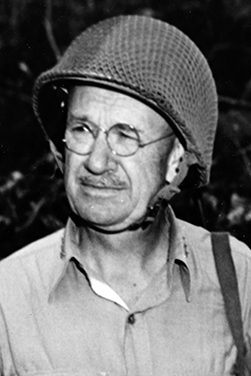
General Smith was in charge of all American troops ashore in the invasion of the Mariana Islands. He was born in 1882 and in the years prior to the war was director of operations and training at Headquarters, Marine Corps, Washington. In August 1942, Smith assumed command of the Amphibious Corps, Pacific Fleet, later re-designated V Amphibious Corps, Thus, Smith directed the landings in the Marshalls and the Marianas. Smith later commanded the Fleet Marine Force, Pacific and the Training and Replacement Command at Camp Pendleton. He retired in 1946 and died in 1967.
Rear Admiral Richard L. Conolly, US Navy
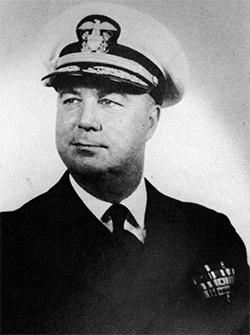
Admiral Conolly was commander of the Southern Attack Force, that was responsible for supporting the assault troops on Guam. He was born in 1892 and graduated from the Naval Academy in 1914. Conolly began the war with the rank of captain and served in both Europe and the Pacific. Prior to the Marianas operations, Conolly commanded a major amphibious task force in the invasion of Sicily in 1943 and in the Marshalls. After Guam’s liberation, Conolly played a role at Leyte Gulf and in the liberation of the Philippines. He died in 1962.
Maj. General Roy S. Geiger, US Marine Corps
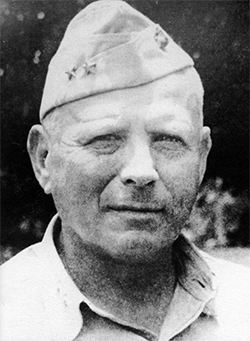
General Geiger was commander of the III Amphibious Corps that was assigned the responsibility to land on Guam for the Liberation. He was born in Florida in 1885 and graduated from Stetson University. He was an early marine aviator and commanded a squadron in France in 1918. Between the wars, Geiger commanded aviation squadrons in Central America. In 1942, he commanded all aviation units at Guadalcanal and the I Amphibious Corps in the invasion of Bougainville. After the Guam invasion, Geiger commanded amphibious operations at Peleliu and Okinawa and became the first Marine general lo command an army. He died in 1947.
Lt. General Takeshi Takashina, Imperial Japanese Army
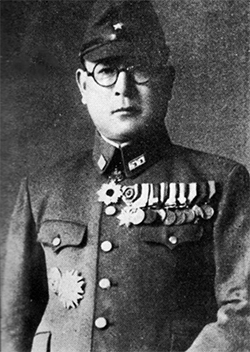
Lt. General Takashina was commanding general, 29th Division and Southern Marianas Army Group. He arrived on Guam in March 1944 and was responsible for the defense of Guam. He was killed at Fonte, Guam by Marine machine gun fire while in the process of retreating from his command post on 28 July 1944. After the death of Takashina, Obata assumed direct control of the remaining Japanese forces on Guam.
Lt. General Hideyoshi Obata, Imperial Japanese Army
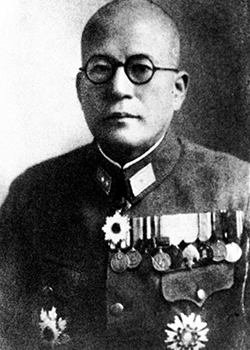
Lt. General Obata commanded the 31st Army and was responsible for the defense of the Marianas, Bonins and Carolines. His headquarters was on Saipan. However, he was forced to stay on Guam during the invasion of Saipan in June 1944. He supervised the defense of the Marianas from Guam, but left the defense of Guam to Takashina until the death of Takashina. Obata then conducted the defense of northern Guam until he committed suicide at his command post at Mataguac, Yigo, Guam on 11 August 1944 at the current site of the South Pacific Memorial Park.
Editor’s note: Reprinted, with permission, from Liberation-Guam Remembers: A Golden Salute for the 50th Anniversary of the Liberation of Guam, published in 1994.